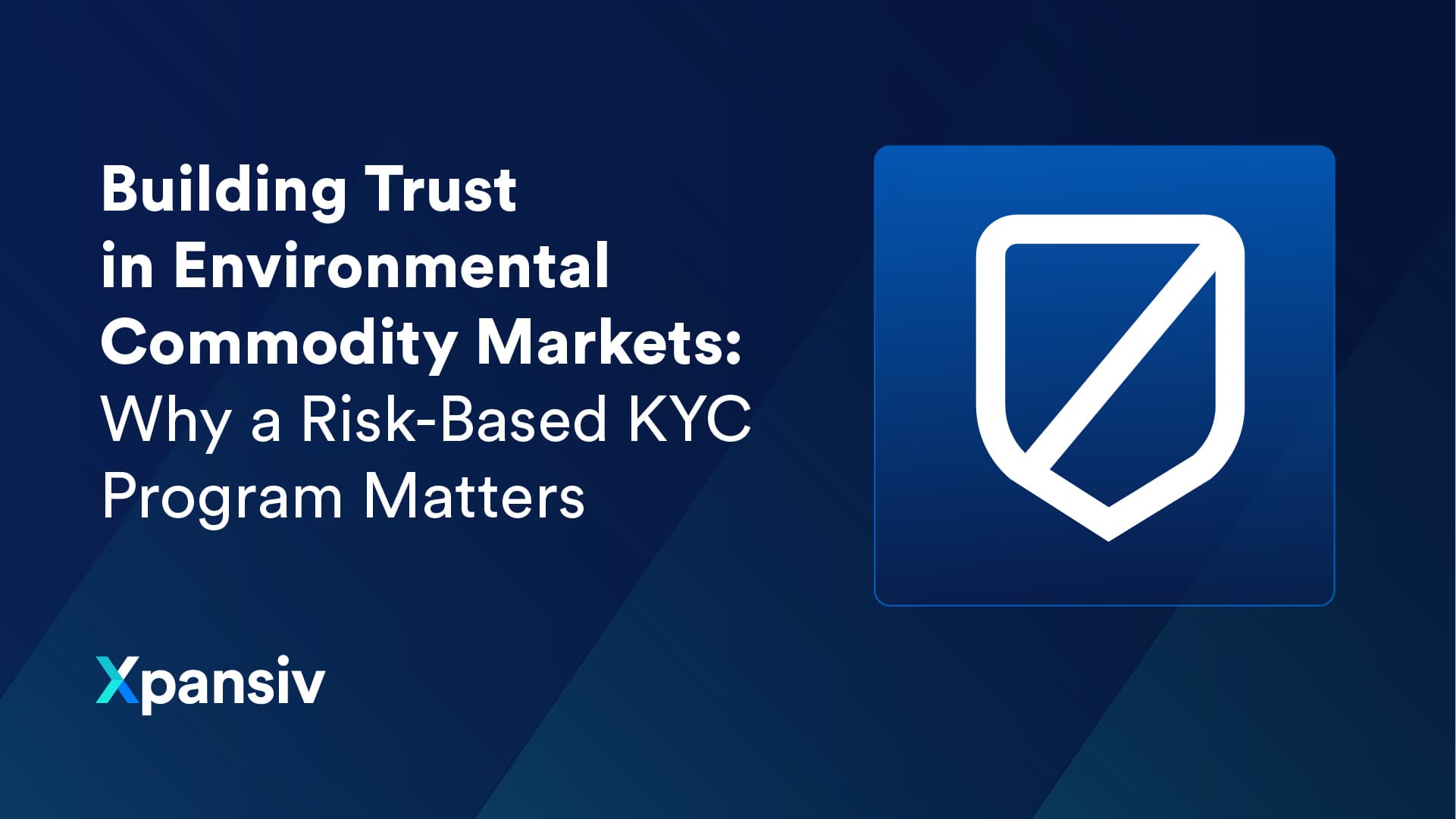Building Trust in Environmental Commodity Markets: Why a Risk-Based KYC Program Matters

As environmental markets deepen, so must the safeguards that underpin their integrity. In our work with global organizations like the World Bank, we’re helping shape best practices to ensure that environmental commodity markets scale responsibly. This post draws on that work and focuses specifically on the critical role of Know Your Customer1 (KYC) Programs as a key safeguard to facilitate market integrity.
Environmental commodity markets are entering a pivotal phase. Retirement volumes continue on their positive trajectory, regulatory attention is intensifying, and corporate climate commitments are heavily scrutinized. In this context, trust and integrity are foundational elements to market deepening and continued success.
Here at Xpansiv, trust and integrity with respect to our products and services begin with our Know Your Customer (KYC) processes. From our experience, KYC processes should not be viewed as a check-the-box exercise but as a critical gate-keeping action for the environmental commodity sector as a whole.
“A fundamental component of transaction integrity in carbon markets is the ability to identify and prevent bad actors from accessing market services and infrastructure.” 2
One Size Doesn’t Fit All: Tailoring KYC Programs to the Risk Profile
Effective KYC Programs begin with a fundamental insight: not all customers carry the same level of risk. For example, newly established project developers, entities based in jurisdictions that allow opaque ownership structures, and global financial institutions each demand different levels of scrutiny. Leveraging a risk-based approach, organizations can apply appropriate standards and requirements to mitigate the varying levels of risk that different customers present.
Foundational pillars of a risk-based KYC Program typically include:
- Customer Identification & Verification: Collecting pertinent customer data elements and verifying this data against documents proprietary to the customer. (e.g., articles of incorporation for a legal entity and a passport for an individual)
- Control and Beneficial Ownership Transparency: Understand who ultimately controls and profits from an entity.
- Sanctions, Political Exposure, & Adverse Media Screening: Screening customers and related parties (e.g., beneficial owners) against global watchlists and reputable news outlets to identify potential ‘red flags.’
- Enhanced Due Diligence: Additional measures applied to customers who present elevated levels of risk to deepen the organization’s knowledge of the customer. (e.g., requesting additional information or documentation, deepening beneficial ownership identification, etc.)
Where to Begin (and Return!)
No matter where your organization is on the KYC maturity curve, awareness of the unique risks that the customer population (potential or existing) poses to the organization is fundamental. Risk categories applicable to our sector are broad yet key elements to consider would likely include corruption and bribery risk, sanctions risk, regulatory risk, and industry risk. Corruption and bribery risk is highlighted below to illustrate this point.
Corruption/Bribery Risk
- If a significant portion of the customer population is domiciled in jurisdictions with high levels of perceived corruption, one’s KYC Program should be calibrated to mitigate such risk.
- A common control used for such scenarios is screening customers and related parties (e.g., company owners) against a robust data set of elected and government officials and their close associates (i.e., politically exposed persons)
Program Implementation
Having developed a nuanced understanding of the organization’s risk exposure, the foundation has been laid to design and implement a KYC Program that is ‘fit-for-purpose.’ Risk-mitigation control selection can now be tailored to the organization’s unique needs while accounting for available resources, whether they are financial, technical, or human capital-related.
From here, it’s common to prioritize the implementation of those controls that deliver the greatest risk mitigation “lift.” For organizations who are in the early stages of program development, such controls will often include customer identification and verification processes, sanctions screening, and targeted training for applicable staff. As programs mature, focus begins to shift toward efficiency and ongoing oversight of process execution, including deploying third-party software tools and conducting periodic audits.
Watch this Space
Across our Risk and Compliance domains, Xpansiv has adopted the posture of implementing best-in-class programs. Our KYC Program is no different where design, as well as implementation, decisions leverage regulatory requirements applicable to the financial sector as well as their industry standards as ‘north stars.’
At Xpansiv, we believe that risk-informed, future-proofed KYC Programs are key to deepening trust, liquidity, and innovation in environmental markets. To learn more about how a risk-based KYC Program builds trust and integrity in environmental commodity markets—and why it’s essential to market growth, contact us here.
- It is also common to refer to Know Your Customer programs as Know Your Business (KYB) programs depending upon the composition of your target market and/or the products and services being offered.
- Carbon Markets Infrastructure Working Group Technical Guidance Note: Transaction Integrity for Carbon Markets Infrastructure: Tools and Recommendations
